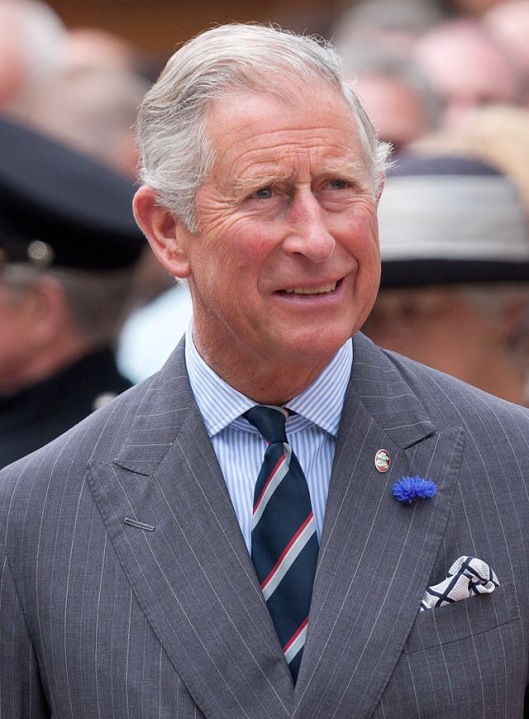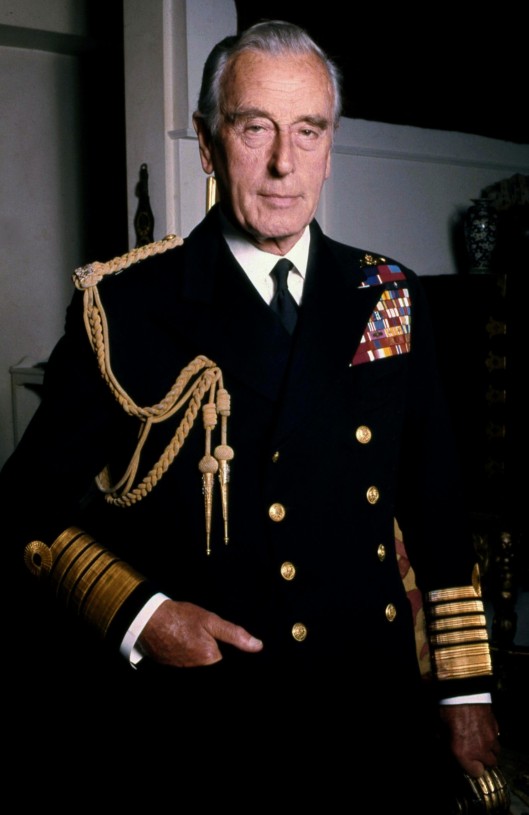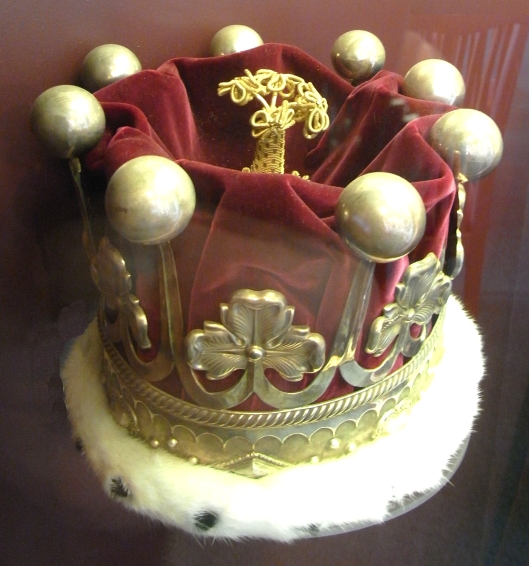
HRH The Earl of Chester, Earl of Carrick.
Earl is a title of the nobility. The title is of Anglo-Saxon in origin, akin to the Scandinavian form jarl, which meant “chieftain”, particularly a chieftain set to rule a territory in a king’s absence. However, for a time period in Scandinavia, jarl could also mean a sovereign prince. Prior to the unification of Norway there were rulers of several of the petty kingdoms of Norway that had the title of jarl and in many cases they had power identical to their neighbors who held the title of king. In modern Britain, an earl is a member of the peerage, ranking below a duke and marquess and above a baron and a viscount. A feminine form of earl never developed and instead the wife of an earl is called a countess.
An earl in medieval Britain was more akin to a duke and as time moved forward it devolved into equivalent of the continental count which was seen as a lesser title. Alternative names for the rank equivalent to “Earl/Count” in the nobility structure are used in other countries, such as the hakushaku of the post-restoration Japanese Imperial era.
In Anglo-Saxon England, when earls held the power equivalent to that of a duke, an earl had authority over their own regions and right of judgment in provincial courts, as delegated of the king, and originally functioned essentially as royal governors. Another role an earl had was that they collected fines and taxes and in return received one-third of the money they collected. In wartime they led the king’s armies. Some shires were grouped together into larger units known as earldoms, headed by an ealdorman or earl. Under Edward the Confessor earldoms like Wessex, Mercia, East Anglia and Northumbria—names that represented earlier independent kingdoms—were much larger than any shire. As stated earlier the title of Earl was nominally equal to that of a duke, specifically a continental duke. However, the main difference was that continental dukes held a measure of sovereignty and earls in were not de facto rulers in their own right, they remained vassals of the king under the feudal system.

Robert Devereux, 2nd Earl of Essex, KG, PC (10 November 1565 – 25 February 1601)
After the Norman Conquest, William the Conqueror tried to rule England using the traditional feudal system but eventually modified it to his own liking. Shires became the largest secular subdivision in England and earldoms al but completely vanished. The Normans did create new earls like those of Herefordshire, Shropshire, and Cheshire but they were associated with only a single shire at most. Their power and regional jurisdiction was limited to that of the Norman counts. There was no longer any administrative layer larger than the shire, and shires became “counties”. Earls no longer aided in tax collection or made decisions in country courts and their numbers dwindled.
King Stephen increased the number of earls to reward those loyal to him in his civil war with his cousin Empress Matilda. It was during the reign of King Stephen that earls once again returned to a more powerful status. He gave some earls the right to hold royal castles or control the sheriff and soon other earls assumed these rights themselves. By the end of his reign, some earls held courts of their own and even minted their own coins, against the wishes of the king.
It fell to Stephen’s successor Henry II to again curtail the power of the earls. He took back the control of royal castles and even demolished castles that earls had built for themselves. He did not create new earls or earldoms. No earl was allowed to remain independent of royal control.
The English kings had found it dangerous to give additional power to an already powerful aristocracy, so gradually sheriffs assumed the governing role. The details of this transition remain obscure, since earls in more peripheral areas, such as the Scottish Marches and Welsh Marches and Cornwall, retained some viceregal powers long after other earls had lost them. The loosening of central authority during the Anarchy also complicates any smooth description of the changeover.

Their Royal Highnesses The Earl and Countess of Wessex.
By the 13th century, earls had a social rank just below the king and princes, but were not necessarily more powerful or wealthier than other noblemen. The only way to become an earl was to inherit the title or marry into one—and the king reserved a right to prevent the transfer of the title. By the 14th century, creating an earl included a special public ceremony where the king personally tied a sword belt around the waist of the new earl, emphasizing the fact that the earl’s rights came from the King.
Earls still held influence and, as “companions of the king”, were regarded as supporters of the king’s power. They showed that power for the first time in 1327 when they deposed Edward II. They would later do the same with other kings of whom they disapproved. In 1337 Edward III declared that he intended to create six new earldoms.
Earls, land and titles
A loose connection between earls and shires remained for a long time after authority had moved over to the sheriffs. An official defining characteristic of an earl still consisted of the receipt of the “third penny”, one-third of the revenues of justice of a shire, that later became a fixed sum. Thus every earl had an association with some shire, and very often a new creation of an earldom would take place in favour of the county where the new earl already had large estates and local influence.
Also, due to the association of earls and shires, the medieval practice could remain somewhat loose regarding the precise name used: no confusion could arise by calling someone earl of a shire, earl of the county town of the shire, or earl of some other prominent place in the shire; these all implied the same. So there were the “earl of Shrewsbury” (Shropshire), “earl of Arundel”, “earl of Chichester” (Sussex), “earl of Winchester” (Hampshire), etc.
In a few cases the earl was traditionally addressed by his family name, e.g. the “earl Warenne” (in this case the practice may have arisen because these earls had little or no property in Surrey, their official county). Thus an earl did not always have an intimate association with “his” county. Another example comes from the earls of Oxford, whose property largely lay in Essex. They became earls of Oxford because earls of Essex and of the other nearby shires already existed. Eventually the connection between an earl and a shire disappeared, so that in the present day a number of earldoms take their names from towns, mountains, or simply surnames.
In England, as the centuries wore on, the term earl came to be disassociated from the office, and later kings started granting the title of earl without it, and gradually without even an associated comitatus. By the 16th century there started to be earls of towns, of villages, and even of isolated houses; it had simply become a label for marking status, rather than an office of intrinsic power. In 1746, in the aftermath of the Jacobite rising, the Heritable Jurisdictions Act brought the powers of the remaining ancient earldoms under the control of the sheriffs; earl is now simply a noble rank.
Forms of address
An earl has the title Earl of [X] when the title originates from a placename, or Earl [X] when the title comes from a surname. In either case, he is referred to as Lord [X], and his wife as Lady [X]. A countess who holds an earldom in her own right also uses Lady [X], but her husband does not have a title (unless he has one in his own right).
The eldest son of an earl, though not himself a peer, is entitled to use a courtesy title, usually the highest of his father’s lesser titles (if any), for instance the eldest son of The Earl Of Wessex is styled as James, Viscount Severn. Younger sons are styled The Honourable [Forename] [Surname], and daughters, The Lady [Forename] [Surname] (Lady Diana Spencer being a well-known example).
In the peerage of Scotland, when there are no courtesy titles involved, the heir to an earldom, and indeed any level of peerage, is styled Master of [X], and successive sons as younger of [X]
 A coronet of a British earl.
A coronet of a British earl.
A British earl is entitled to a coronet bearing eight strawberry leaves (four visible) and eight silver balls (or pearls) around the rim (five visible). The actual coronet is mostly worn on certain ceremonial occasions, but an Earl may bear his coronet of rank on his coat of arms above the shield.
Former Prime Ministers
An earldom became, with a few exceptions, the default peerage to which a former Prime Minister was elevated. However the last Prime Minister to accept an earldom was Harold Macmillan, who became Earl of Stockton in 1984. In the 1970s life peerages (baronies) became the norm for former Prime Ministers, though none has accepted any peerage since Margaret Thatcher in 1992.













 A coronet of a British earl.
A coronet of a British earl.

